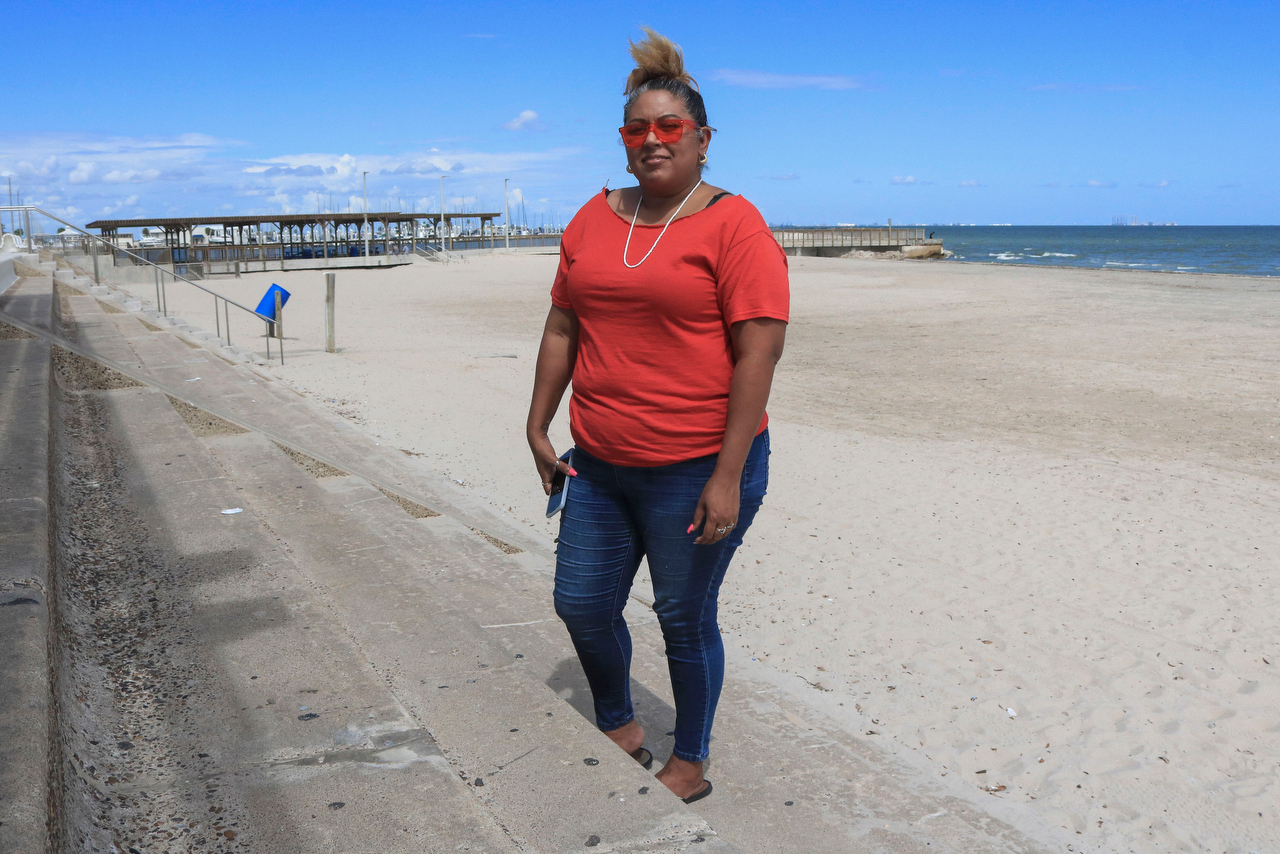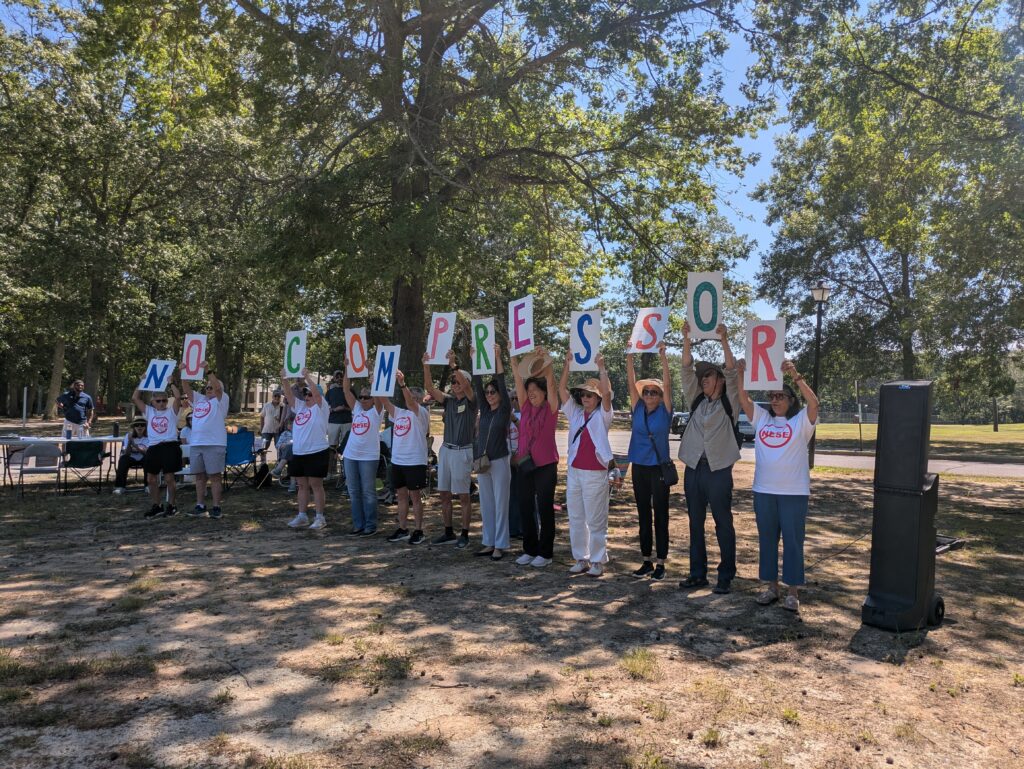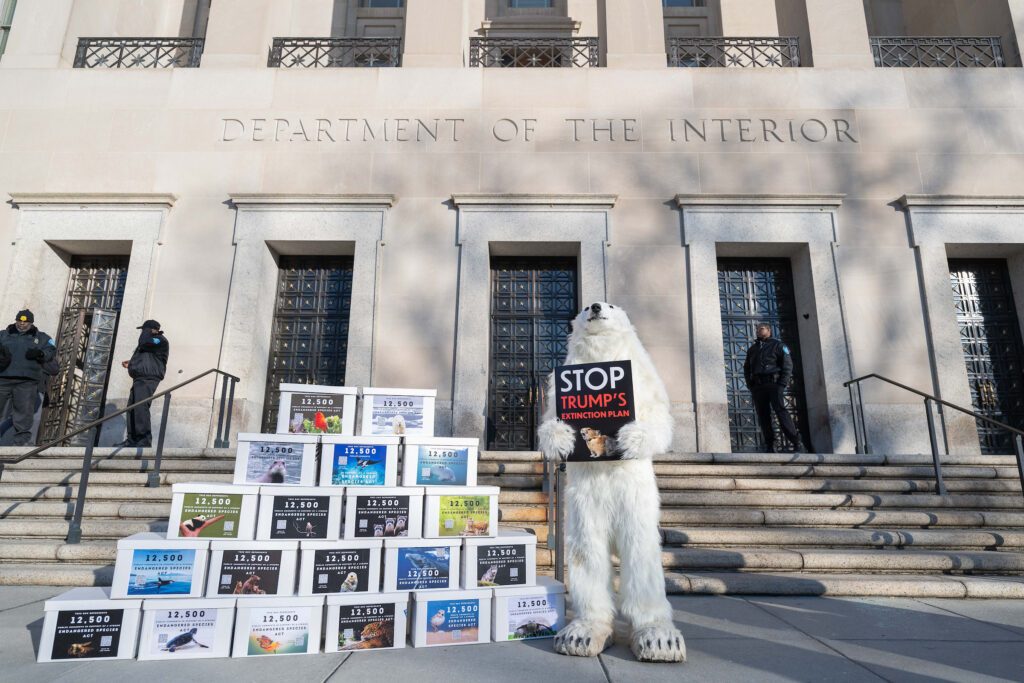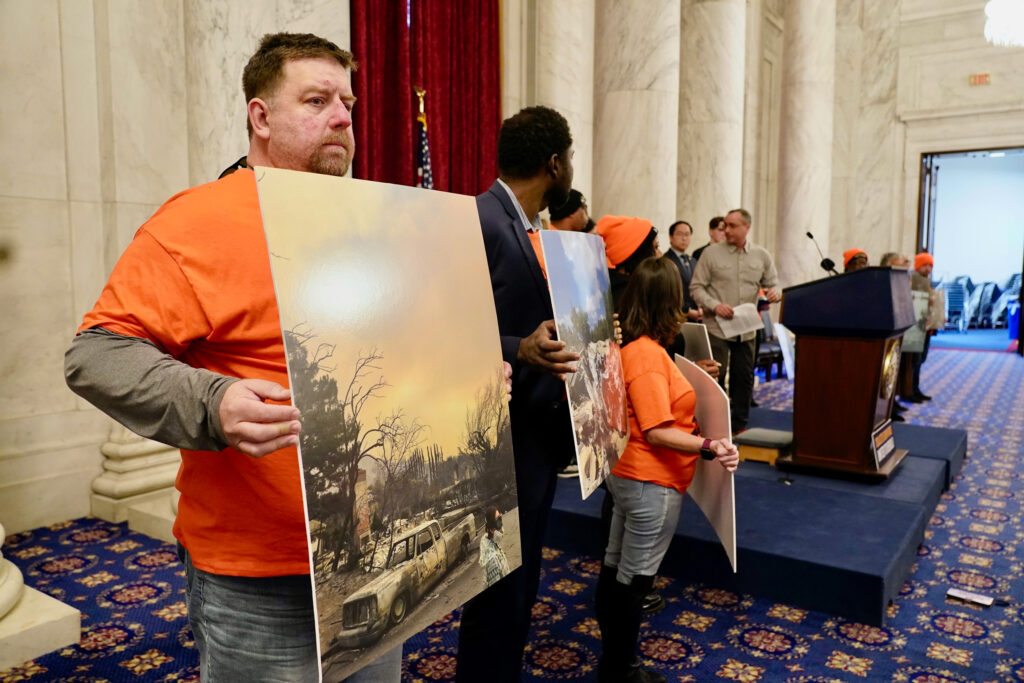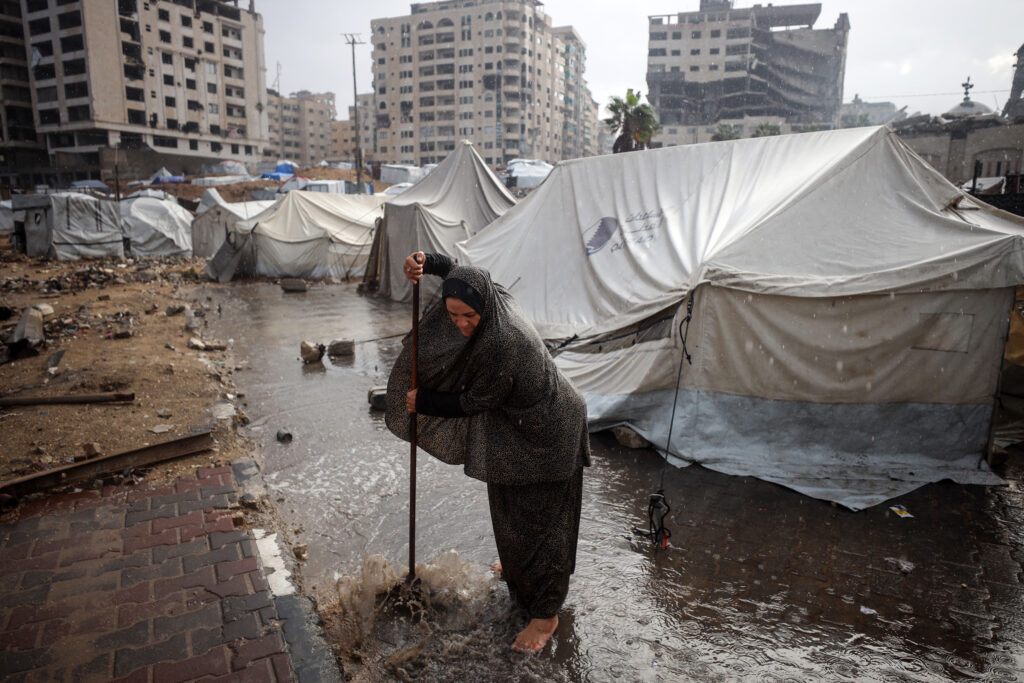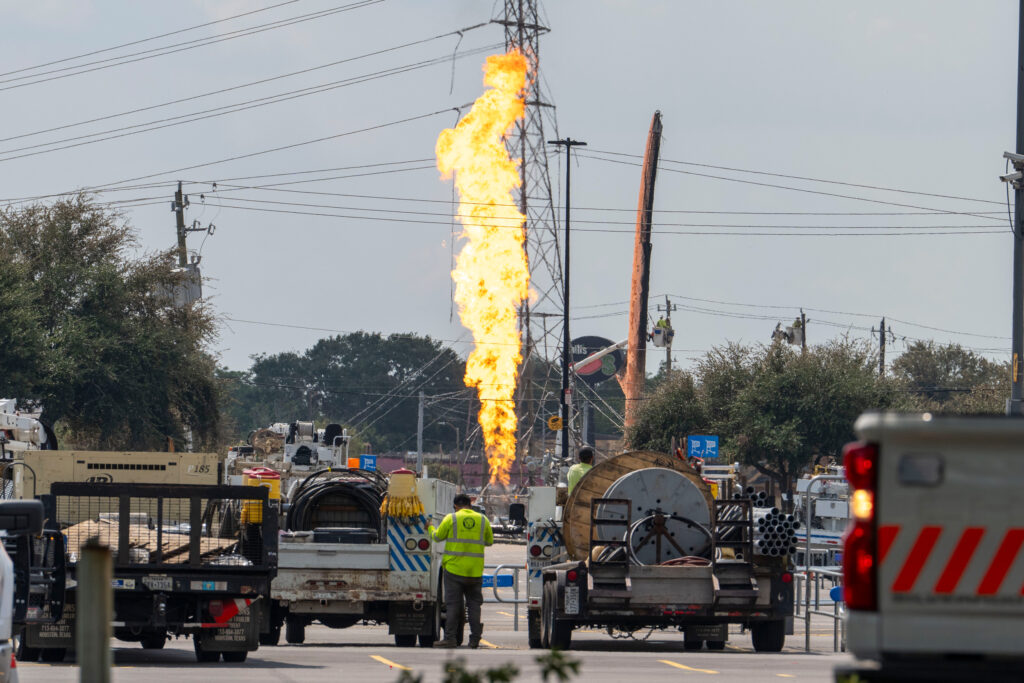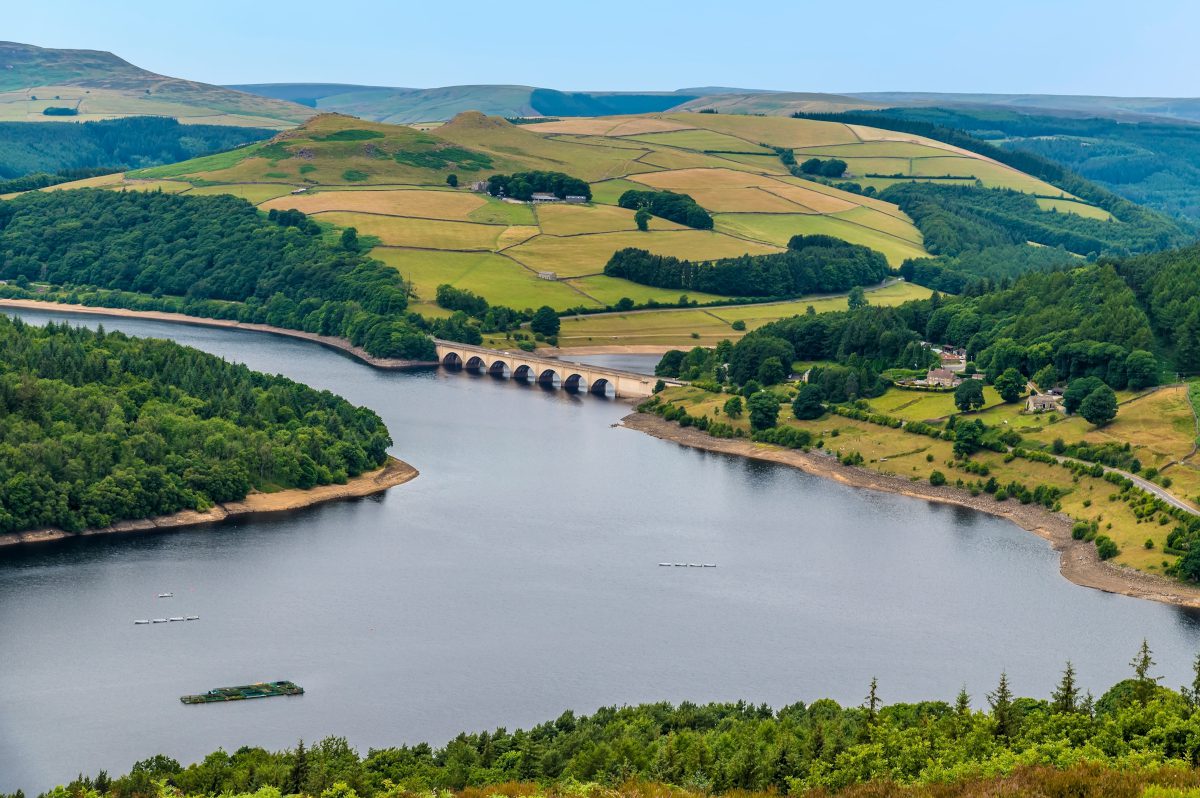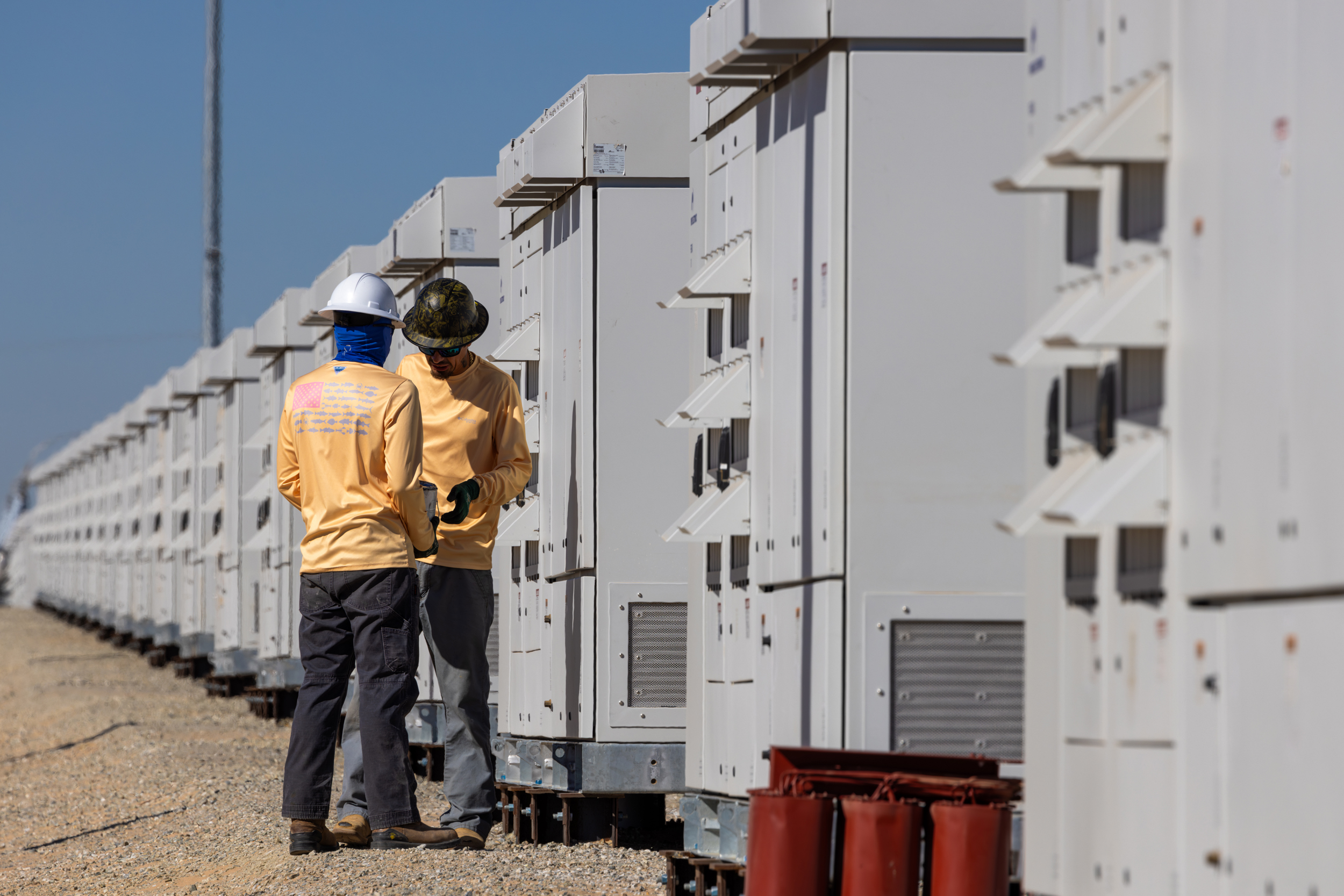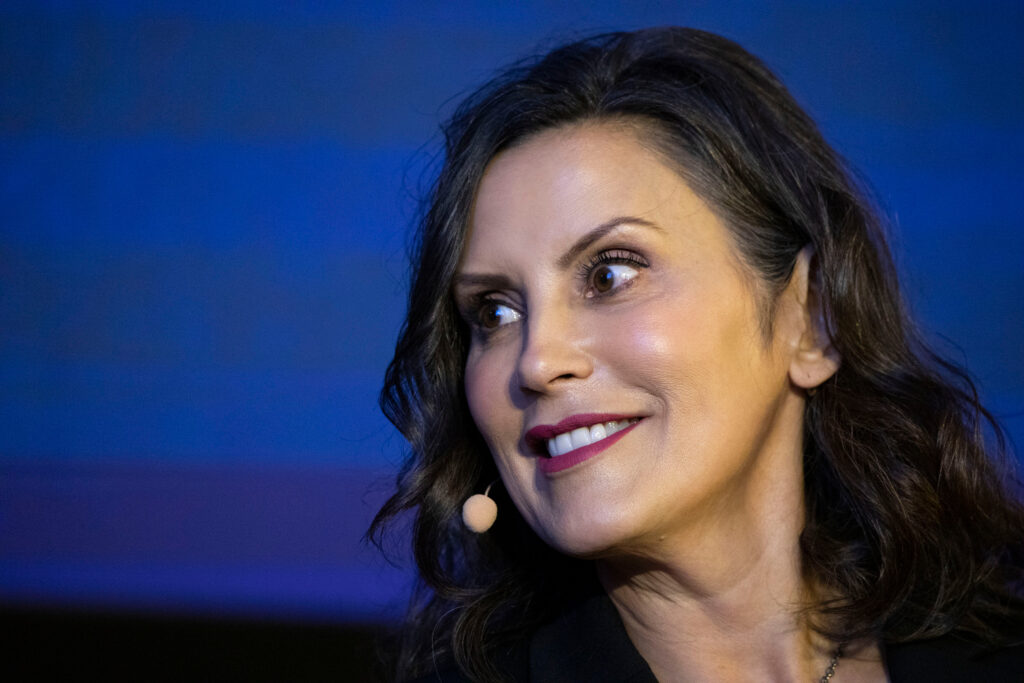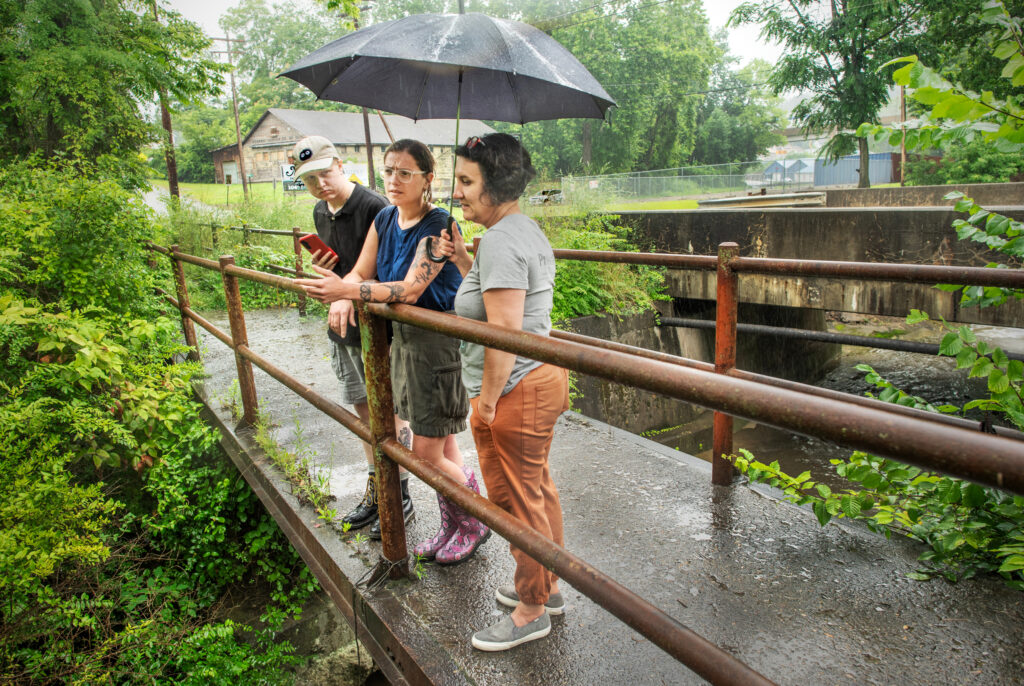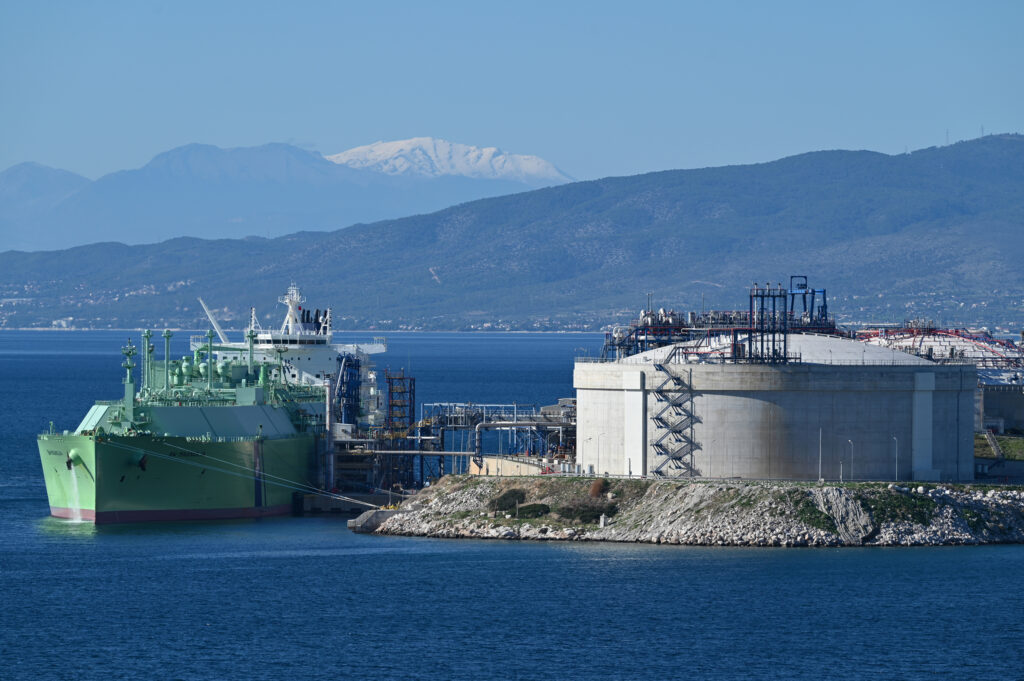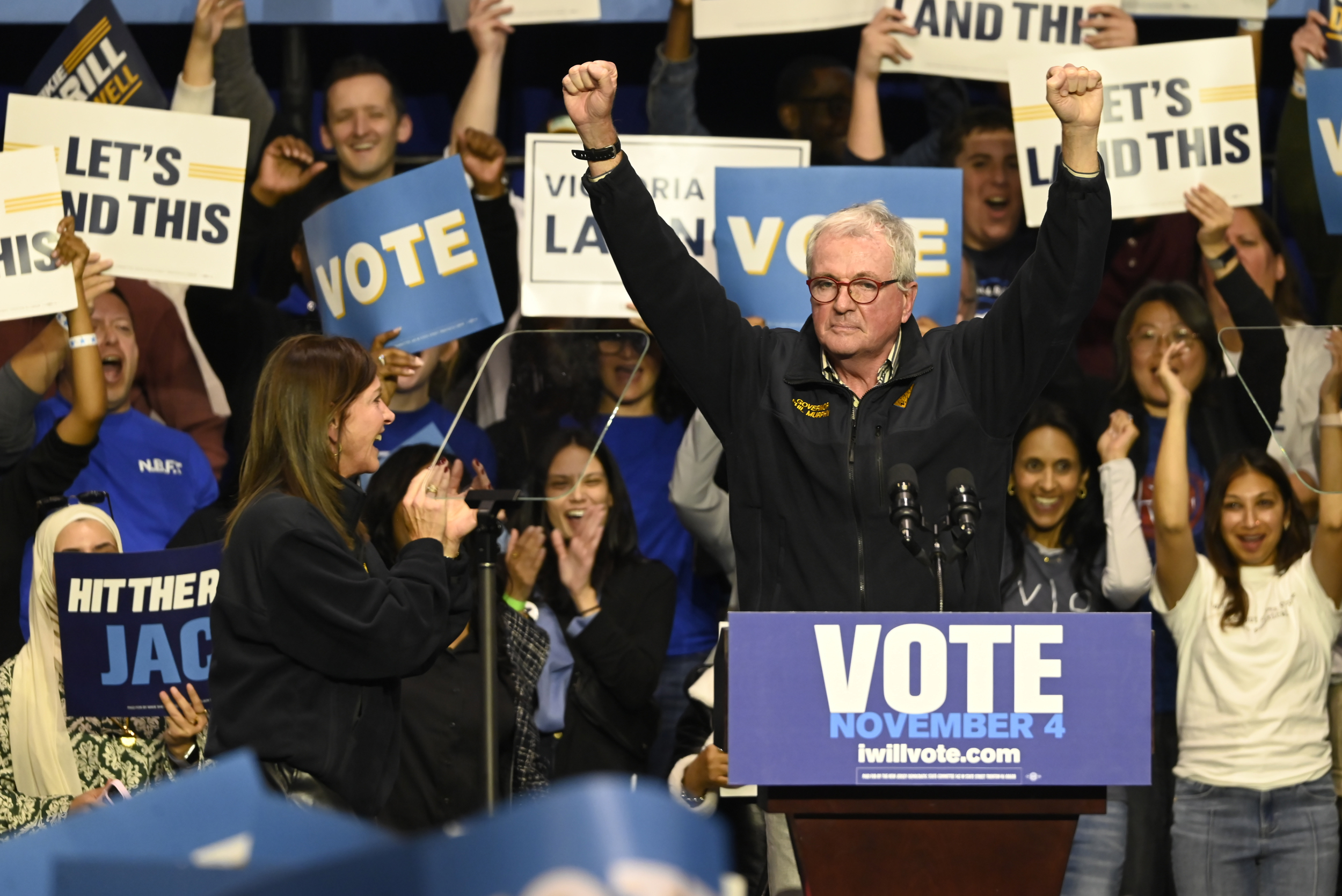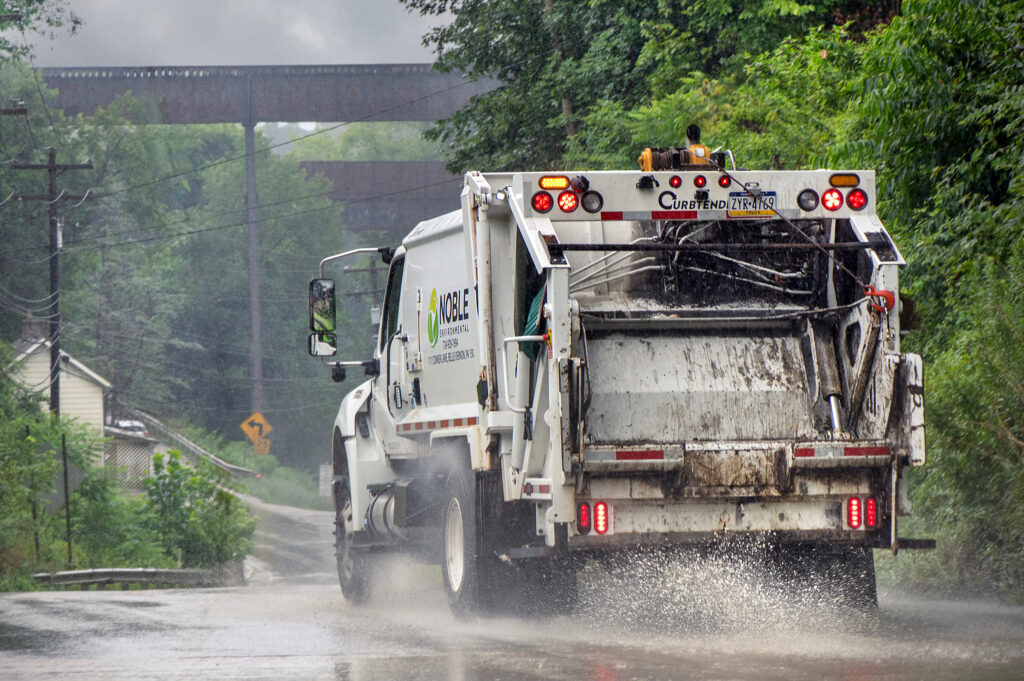From our collaborating partner “Living on Earth,” public radio’s environmental news magazine, an interview by host Steve Curwood with the Rev. Ben Chavis, an environmental justice pioneer.
In 1981, civil rights leader the Rev. Ben Chavis coined the phrase “environmental racism” after he was arrested for protesting North Carolina’s decision to dump tons of toxic waste in poor, predominantly Black Warren County.
Six weeks of demonstrations failed to stop the toxic dump, but the publicity sparked a movement that’s now known as environmental justice. North Carolina’s governor Jim Hunt eventually apologized, but it took until 2004 before the PCBs in Warren County were finally cleaned up. And environmental racism in America is still a problem.
Older Black people die three times as often as whites from pollution-related diseases, Puerto Ricans have nearly double the asthma incidence and 75 percent of the water for Hopi Native Americans contains arsenic.
The Biden administration made environmental justice a key part of EPA policy, but the Trump Administration is cutting EJ budgets and its very mention.
This interview with EJ pioneer Ben Chavis has been edited for length and clarity.
We’re hiring!
Please take a look at the new openings in our newsroom.
See jobs
STEVE CURWOOD: Let’s spin the clock back to 1981. You found yourself in rural Warren County, North Carolina, not doing a voting rights protest, but something else. What were you doing?
BEN CHAVIS: We were protesting the unjust, unfair and what we believe was illegal dumping of tons of PCB-contaminated soil. PCB is polychlorinated biphenyls, a very cancer-causing substance. Warren County was the poorest county of the 100 counties in North Carolina, but also Warren County was the most predominantly Black county in North Carolina—agricultural, rural and the water aquifer level is very shallow. What I mean is, most of the people got their water from a well and did not have a public source of water. So that’s the last place where you want to dig a hole and dump tons of carcinogenic, cancer-causing material.
Of course, there was debate. Reagan was president, and you had a head of the EPA at that time who didn’t believe in environmental justice, who didn’t believe in environmental racism. And quite frankly, my background was civil rights. This is the first time that the Civil Rights Movement intersected in a formal way with the environmental movement.
CURWOOD: What happened when you started marching to protest the dumping of this really toxic stuff in this Black community?
CHAVIS: Well, ironically, I got calls from some of my civil rights colleagues saying, ‘Ben, this is an environmental matter. It’s not civil rights.’ I said, ‘Oh no, it is civil rights.’ And of course, some of the people in the environmental movement said, ‘Well, this is a Black protest. It has nothing to do with the environment.’
But because 500 people, including myself, were arrested in Warren County in 1981-1982, it brought national attention to this landfill in Warren County. And as a result of the national attention, we begin to hear from the Southwest part of the United States, from Mississippi, Alabama, Flint, Michigan, all over the country. People say, you know, we have environmental problems here, in Cancer Alley in Louisiana, a very famous place, but nobody was paying attention. Everybody saw all these spots as isolated incidents. After Warren County, people began to connect the dots, and that’s why we say Warren County is sort of the birthplace of the environmental justice movement.
CURWOOD: How fair is it to say you coined the term environmental racism?
CHAVIS: Well, it’s very fair, because it’s true. One night in the Warren County jail, it just came upon me. I said, ‘You know, this is racism, but it’s environmental racism.’ And I got a little sheet of paper and jotted out a definition: environmental racism is racial discrimination in environmental policy making, environmental enforcement and environmental remediation, but it’s also the exclusion of people of color in the decision-making around environmental justice, environmental hazards and environmental policy making. Today, in 2025, there’s a connection between environmental justice and climate justice. Similar aspects of both connect.
CURWOOD: Looking back over these last 40-plus years, what were some of the lessons you felt that you learned from the Warren County struggle?

CHAVIS: Number one, we learned the importance of grassroots organizing. Number two, we learned that we have to be more definitive in how we define environmental justice. And I’m so pleased that at the first People of Color Environmental Summit in 1991 in Washington, D.C., we established the 17 principles of environmental justice. I teach a course now at Duke University on environmental justice using those 17 principles, which still applies the vision that we had back then, being a multiracial, multilingual, multicultural movement around this issue and those principles.
And we really thank the leaders in the Native American community during that time to help us to see the sacredness of the Earth. You know, I’m a preacher, so I have to quote this Bible verse, ‘The Earth is the Lord’s and the fullness thereof.’ That’s from Psalms. So if the Earth belongs to the Lord, that means that the Earth does not belong to the government. The Earth does not belong to a petrochemical company. The Earth does not belong to people who want to do things to harm the Earth or to harm the environment, or to harm the planet or to harm the atmosphere.
Finally, we learned that each movement has to regenerate itself. I’m very encouraged by millennials and Generation Z that have a stronger consciousness of the importance of climate and environment than what it was 40 years ago.
CURWOOD: Where are some communities where you have seen the most flagrant cases of environmental racism in America?
CHAVIS: The most flagrant is Cancer Alley in Louisiana. That’s between Baton Rouge and New Orleans. Because of the proximity to companies that emit poisons into the atmosphere, into the water and into the land, it gets into the people. More recently, Flint, Michigan. The people in Flint, Michigan have been lead poisoned because of bad lead pipes and poor environmental policy and even the denial of the state of Michigan at one point that they had a problem. They say, ‘Oh, well, we have fresh water now.’ But, they’re going to have to live for the rest of their lives with the contamination of their bodies. That’s why, in a number of cases, the struggle for environmental justice is a matter of life and death. The struggle for climate justice is a matter of life and death.
CURWOOD: What percentage of African Americans are more likely to live in areas situated near hazardous waste facilities these days?
CHAVIS: I would like to go first to 1987 and the United Church of Christ Commission for Racial Justice; I was the director at that time.
We commissioned the first national study to ask that question. When you do research, it’s not so much the numbers; it’s what questions do you ask of the numbers? No one had ever asked Blacks or Latinos or Native Americans or Asian Americans or even poor whites disproportionately exposed to environmental hazards. What we found was that it wasn’t poverty. It was race that was the number one factor that determined where all these sites were around the United States, and that’s what led to the first People of Color Environmental Leadership Summit in 1991.
Today, I’m very pleased that what started as a small, rural environmental justice movement in Warren County is now a global movement. It’s not only a movement throughout the United States, but the United Nations now cites environmental justice.
I know they’re dismantling it now, but until recently, the EPA had an official Office of Environmental Justice. So we’ve done a lot. We’ve made progress. We still haven’t gotten to where we should be, but we’ve made a lot of progress over the years as a result of Warren County. Today, African Americans are still disproportionately exposed. From our current research, we believe that 20 percent of all African American families and communities are exposed to environmental hazards.
CURWOOD: How does that compare to white America?
CHAVIS: White America is less than 2 percent. Racial discrimination, housing discrimination and voter discrimination are connected, and that’s why you can’t just be focused on one aspect, because the others will come back to bite you. That’s why we have to have a more holistic view of what the movement is about, what the freedom movement is about, what the equality movement is about.
This whole debate now about diversity, equity, inclusion, I think, is a diversion, because the truth of the matter is, there’s only one race, and that’s the human race. We’re all part of one human family, but we’ve been so divided, been so pitted upon one another. White supremacy is also like a cancer that is in desperate need of healing.
CURWOOD: Within the last month or so, we’ve seen the President of the United States shut down the environmental justice programs at the Environmental Protection Agency. To what extent is that racism, in your view?
CHAVIS: I think it is an example of environmental racism. I think it’s an example of climate injustice as well as environmental injustice. And what’s going to happen is some of the very people that voted for Trump are also going to suffer as a result of these policies.
When you dismantle the CDC, when you dismantle the EPA, when you dismantle even the Department of Education, who is that going to hurt? It’s going to hurt the majority of not only American children, young people, but it’s also going to put our families and communities in greater jeopardy.
I come from a movement perspective. I think these harsh and unjust policies that we’re witnessing today are going to cause a groundswell, not just to react, but also to demand that we have to learn from our history, not repeat the history.
CURWOOD: It was people of faith who really led the Civil Rights movement. But when I go to a gathering of environmental activists, mostly white ones, I don’t hear a whole lot of prayers. To what extent is there a spirituality gap in the environmental movement in this country, do you think?
This story is funded by readers like you.
Our nonprofit newsroom provides award-winning climate coverage free of charge and advertising. We rely on donations from readers like you to keep going. Please donate now to support our work.
Donate Now
CHAVIS: The answer is yes, there is a spirituality gap. Because keep in mind, prior to 1991, the environmental justice movement was not integrated, it was not desegregated.
Faith is important, in my view. You have to believe in what you’re doing, not just have an intellectual exercise or debate. I think there’s a cause of faith that people want to be aligned to what is righteous against what is perceived to be unrighteous, and that’s where faith comes in.
I call upon the Black church today to renew its front line position in civil rights; to renew its front line position in environmental rights or climate rights. I think some of our churches, I’ll speak for the Black churches, have become so prosperity oriented, the sense of commitment to social justice or the social gospel is not as strong as it once was, but I think that can be renewed and revitalized.
CURWOOD: How tired are you now of fighting this same fight over and over again?
CHAVIS: I’m 77 years old. I’ve been involved in the civil rights movement since I was 12. And I can say without any fear of contradiction that I look back over the years and look where we are now, and I see enormous progress. I think a lot of times, if we only see our deficits, if we only see our disappointments, if you only see our failures, you won’t see our triumphs, our successes, our overcoming.
We used to sing, ‘We shall overcome.’ In the 1960s we were not overcoming, but we sang that song because we knew one day we will overcome. And so the way I look at it, I ain’t tired. In fact, when I teach this course at Duke, I get rejuvenated seeing young people who have open minds, who are hungry and thirsty for truth. That gives me a sense of not only hope, but a sense of perspective that our world is changing despite all that is going on. There are more people today conscious of the oneness of our humanity than there were 50 or 60 years ago, and that makes me optimistic.
CURWOOD: What’s your advice to America at this juncture about the climate and environmental justice emergency?
CHAVIS: As some would say, my famous quote from Dr Martin Luther King, Jr, my favorite quote. I was the youth coordinator for the Southern Christian Leadership Conference [founded by King] in my home state of North Carolina. I was 14 or 15 years old. I was driving before I should have been driving; I had mobility. I learned a lot from Dr. King, from Abernathy, from Andrew Young, from a long list of mentors that I was blessed to have. But Dr. King said, ‘Injustice anywhere is a threat to justice everywhere.’ So I would say, environmental injustice anywhere is a threat to justice everywhere. I would say climate injustice anywhere is a threat to climate justice everywhere.
What I’ve learned in the movement is, change is possible to the extent to which people get involved and stay involved and not let their spirit get broken. You asked me earlier about the importance of faith.
One of the things I tell young people, and I tell people my age, whatever happens to you in life, there will be disappointments, there will be trials and tribulations, but at the end of the day, never let anyone or anything break your spirit. Having that strong spirit to stand up, to speak out, to organize, to mobilize, is something that is really needed today.
A lot of people had their hearts broken because Kamala Harris did not win the election. Well, we got to mend our broken hearts. We have to mend our broken spirits. We just can’t go down in the dumps and fall down on someone who wants to be king of America. What we have to do is to mobilize and organize anew. And I believe that the God of our ancestors will be the God of our future, and answer our prayers. But in order to have the prayers answered, you know, you’ve got to have faith. And so that’s what keeps me going. Every day I work, even though I’m 77, and I’m glad to still have the strength and the good health to work and continue to make a contribution.
About This Story
Perhaps you noticed: This story, like all the news we publish, is free to read. That’s because Inside Climate News is a 501c3 nonprofit organization. We do not charge a subscription fee, lock our news behind a paywall, or clutter our website with ads. We make our news on climate and the environment freely available to you and anyone who wants it.
That’s not all. We also share our news for free with scores of other media organizations around the country. Many of them can’t afford to do environmental journalism of their own. We’ve built bureaus from coast to coast to report local stories, collaborate with local newsrooms and co-publish articles so that this vital work is shared as widely as possible.
Two of us launched ICN in 2007. Six years later we earned a Pulitzer Prize for National Reporting, and now we run the oldest and largest dedicated climate newsroom in the nation. We tell the story in all its complexity. We hold polluters accountable. We expose environmental injustice. We debunk misinformation. We scrutinize solutions and inspire action.
Donations from readers like you fund every aspect of what we do. If you don’t already, will you support our ongoing work, our reporting on the biggest crisis facing our planet, and help us reach even more readers in more places?
Please take a moment to make a tax-deductible donation. Every one of them makes a difference.
Thank you,



